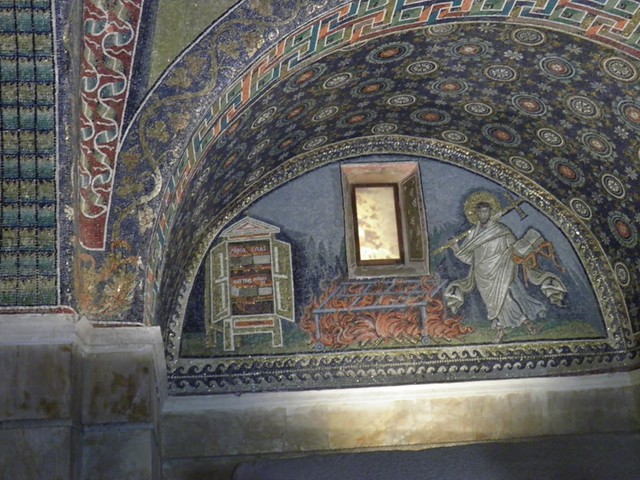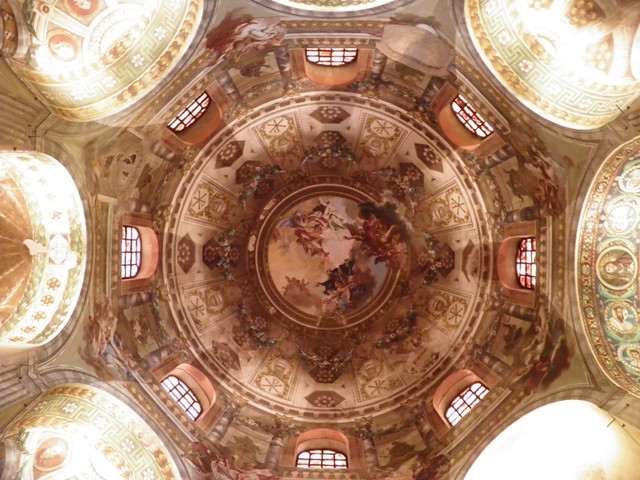Parmesan, Balsamic & Ham Tour - Foodie's Delight Tour
Welcome to Ravenna, a quaint town that lies in the Italian province of Emilia Romagna. This city, known as the mosaic capital of the world, has more than enough to offer to a curious traveller. If you are an art or a history lover, this is the place to be. This town with its rich heritage was the capital of Western Roman Empire for three centuries. It is home to the famous Italian Poet Dante, who spent the last years of his life here. You can see the churches and baptisteries adorned with beautiful mosaics, which is the work of skilled craftsmen that gave their best to beautify this town. Eight of the world’s UNESCO heritage sites are housed here. The historic Christian monuments, its proximity to Adriatic Riviera, the food and the art make it a place worth visiting once and again.
The city is very popular with tourists who are looking for a day excursion from other towns of the country such as Venice, Bologna and Rome.
Mausoleum of Galla Placidia
On this tour, we will visit four of the significant Christian monuments in the city of Ravenna. It will take us back in time to as early as the 5th century. We will begin the tour of this ancient and artistic city with a visit to the Mausoleum of Galla Placidia. With it, enter the Roman Empire in the 5th century. We will also visit Basilica of Sant’Apollinare Nuovo, Basilica of San Vitale and visit Basilica of Saint Francis and Tomb of Dante Alighieri. We will end our tour with a visit to Piazza del Popolo, the city’s town hall.
Mausoleum of Galla Placidia: Galla Placidia was a talented and a
religious woman who was the daughter of Emperor Theodocius I the Great. Her father was the ruler of both the western and eastern empires. Galla Placidia lived from AD 392 to AD 450 and ruled the city of Ravenna.
The Mausoleum of Galla Placidia was erected by Galla during her reign in Ravenna along with her other grand building projects in Rome, Jerusalem and Ravenna. It was constructed to bury the empress and other noble family members’ remains. The structure is known for the most impressive mosaics in the entire city. The UNESCO documents list these mosaics as artistically perfect as compared to the others in the town. The mausoleum is situated behind the Basilica de San Vitale and is approximately 100 years older than the Basilica. From outside, the building looks small and simple. However, the interiors are entirely covered in mosaic artwork, which can be dated back to the 5th century. The entry to the building is through the corridors that lead to National Museum. One batch of visitors is allowed to stay for five minutes. You can quickly go for the next five minutes viewing on a non-rush day.
Basilica of Sant’Apollinare Nuovo
Basilica of Sant’Apollinare Nuovo: Next we go to see the Basilica of
Sant’Apollinare Nuovo to explore the Theodoric empire in the 5-6th centuries.
It was built as a Palatine church of Arian religion next to the palace of
Theodoric who lived from AD 493 to AD 526. Here you can admire the Byzantine wall mosaics and see how those evolved in style, ideology and iconography. The mosaics depict tales of Jesus and showcase the crucial areas in the historic city of Ravenna. You can see the original mosaic work that illustrates the New Testament in the 26 scenes from the Theodoric empire. You can see the two side pilasters and mullioned windows adorning the façade of the Basilica. The original four-sided porch was renovated with a marble porch in the 16th century. Towards the right of the façade lies a cylindrical structure that dates back to the 9th century.
Basilica of San Vitale
Basilica of San Vitale: It is one of the most important examples of
Christian art in the entire country. The church is not architecturally a
basilica. But this honourable title was given to it by the Roman Catholic
Church; it is a title bestowed to buildings of significant historical and
religious significance. It was started by Bishop Ecclesius and completed in AD 548 by Archbishop Maximian. The mosaics in the Basilica represent the
ideological and religious beliefs of the empire of Justinian who reigned from
527 to 565. These are the best preserved Byzantine mosaics outside
Constantinople. Once you enter the octagonal Basilica, you will be mesmerised by the width and elevation of the spaces and the beautiful frescoes of the cupola that were painted by the Bolognese painters. The structure is made of marble with the dome made of terra-cotta, which lies on eight pilasters. You can see the merger of eastern and western art, which represents the oriental art influence. It was marked as a UNESCO world heritage site in the year 1996.
Basilica of Saint Francis and Tomb of Dante Alighieri: We now visit the Italian poet’s area where we pay homage and discover Italians love for him. We also go back in history and learn how his remains were stolen to be kept in Ravenna.
The original church was built in AD 450 by Bishop Neone and almost replaced in 9th century by a more massive structure. From the ground plan, it looks like a smaller version of Old St. Peters in Rome. This is Dante’s last church and is the place where Dante’s funeral took place in the year 1321. The church was again renovated in the 17th and 18th century.
We conclude the historic tour with a visit to the city’s town hall square Piazza del Popolo. It was built by Venetians and has a resemblance to St. Mark’s Square in Venice. Here you can enjoy some ice cream, have a hot cup of coffee or dine at any of the restaurants. You can roam around the Piazza and also visit the many mosaic workshops that sell mosaic art pieces.
There is no better way to explore the city than this guided tour that shares the secrets and treasures of Ravenna’s with the travellers. The duration of this walking tour is approximately three hours. Please ensure to
wear suitable clothing as you are going to visit places of worship. Also, it
would be advisable to wear comfortable footwear to ease your walking while you peek into the historical past of the city.


